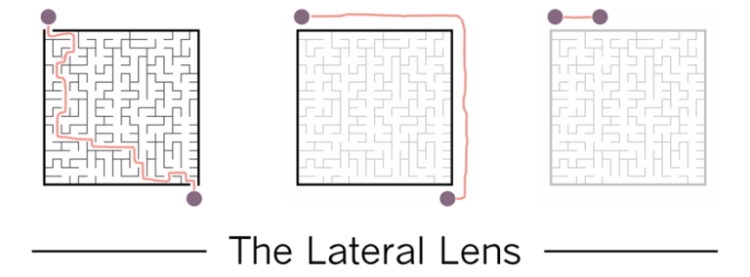
I was recently chatting with Vicki Amon-Higa, who runs a Customer Experience consultancy. She was telling me about “the rock and the wrapper.” The “rock,” she said, is your technical product offering or service, whatever it is. The “wrapper” is everything else that goes into offering this to customers. She said she’s noticed that even though without the wrapper customers don’t get the rock, efforts to improve experience often focus on the rock and ignore the wrapper. In this post we’ll use this metaphor to reexamine both Customer Experience and Quality.

From the customer perspective, your offering is always the rock in its wrapper. You focus on the quality of your offering and your customers focus on the experience of being on their end. This experience is determined by the interactions they have with you as a company or brand, as compared to their overall needs and expectations. Your quality is simply the flipside of this—it is determined by whether you can meet or exceed these needs and expectations as you continue in this relationship.
It doesn’t matter what the rock is. It might be a cloud data service, CRM software, cars, or computer chips. It also doesn’t matter whom the people are you are providing it to. For the sake of simplicity, in this post we’ll use the term “customer,” but actually mean “customer, user, employee, developer, constituent, patient, or whatever.” Again, it really doesn’t matter. The distinction between CX and UX is for the most part unhelpful. The provider provides something of some quality that results in some experience for the “providee.”
Quality and Experience can be thought of as simply being the perspectives of the provider and providee parties in this exchange. Product and service providers are in relationship with the providee. They might each view this relationship through their own lens, but it’s the same relationship, and each party is ultimately focused on the same thing. Everyone involved is focused on the value they get out of the relationship. (Image adapted from Joe Natoli.)

The provider’s real goal, of course, is to generate value for the business. There is only one way to create business value, however, and that is to change someone’s behavior. Some target population, whether customers, users, or employees, must change their behavior in some way that generates the value the business desires.
Now, even if the users in question are your own employees, mandating a desired behavior change doesn’t tend to work out so well. Thus, the only sustainable way to generate value is to provide something customers will adopt and use for their own reasons, something they will proactively use in a way that creates value for the business because doing so also creates value for them.
As Deming long argued, quality includes both how customers interact with your offering as well as how you in turn interact with them. A quality focus, properly understood, already presumes being laser focused on experience. They are not separate things. Returning to Vicki’s rock and the wrapper analogy, neither quality nor experience can be confined to the rock. (Image adapted from Out of the Crisis.)

If the rock is a software product, then improving it would involve a focus on its features and usability. If it’s a computer chip, then you might be focused on RAS, on reliability, availability, and serviceability. The wrapper, however, includes things as far reaching as how you collaborate and communicate with your customers—it’s the entirely of the Venn diagram above. And, to Vicki’s point, the variance of a resulting experience is sometimes more accounted for by the wrapper than the rock. This, Vicki argues, should come as good news, as these oft-neglected wrapper elements can also be easier to improve.

It might be tempting to argue that the rock is always more important, that without the rock there would be no customers in the first place. In many contexts, however, this is simply not true. It is often one “rock” among a mix of others, and when customers do get mad over a particular rock issue this often only makes wrapper quality matter even more. Take the not too uncommon example of a customer who is complaining that they don’t feel like they are really being listened to. Notice they are not complaining about your product as much as they are complaining about you. Listening and taking action on what is learned is crucial, but so is communicating whatever improvements are made back to the customer.

Adequately addressing this issue might be key to retaining the relationship—and yet this has nothing to do with the rock itself. Addressing this could be as simple as changing how you behave in conversations with the customer, it might entail closing the loop better, doing more regular reports, or it might involve improving your entire org culture. Either way, as this example demonstrates, providers can and do lose customers because of issues that are not rock-related.
Again, from the customer’s perspective, your offering is always the rock in its wrapper. And it’s not just the rock that is in a “wrapper,” it’s also the customer relationship, which is your entire ability to keep generating bidirectional value.
Neglecting wrapper quality comes at a high cost.
